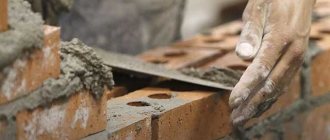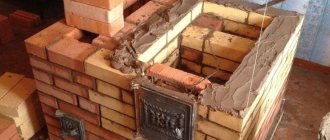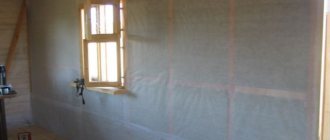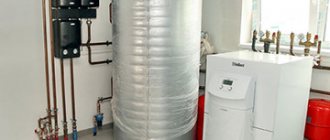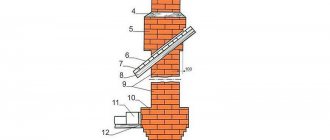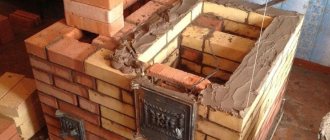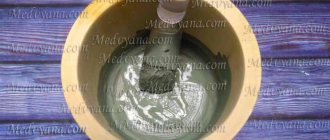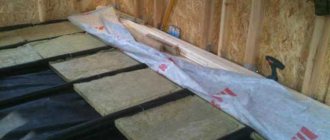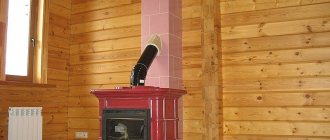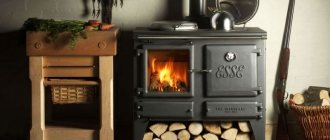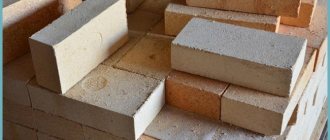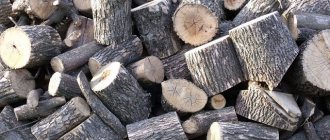No. 1. Basic requirements for bricks for laying stoves
The stove must cope with a lot of complex negative factors affecting it, including very high temperatures and sudden temperature changes down to negative values, if winter occurs only occasionally in a country house. The chimney, which is in direct contact with the environment, is also exposed to sudden temperature changes. Therefore, the brick that is used to equip the stove in the house must meet the following general requirements:
- resistance to high temperatures and open flames;
- high mechanical strength;
- resistance to temperature fluctuations;
- the ability to accumulate heat and retain it.
To lay one furnace, different types of brick are used, and each is used in the arrangement of a specific part of it.
Installing oven doors
Depending on the design of the stove, folding, lifting, sliding or classic doors are installed.
When choosing a door material for the stove, take into account the following points:
- cast iron structures with glass inserts or all-glass products are chosen if the house likes to admire the play of flames;
Through the glass you can clearly see how the fire is burning in the stove Source idei-landshafta.ru
- All cast iron samples are used if the stove is fired with coke, coal or mixed fuel. Doors made of steel or glass are suitable for a wood-burning stove;
- To avoid burns and protect children or pets from dangerous environments, a metal door with an additional thermal shield is required.
The selected doors are installed at the appropriate stage of laying brick stoves, according to the given scheme.
No. 2. Furnace elements and suitable bricks
A solid fuel stove is a complex structure, each element of which operates under different conditions, so it is unlikely that it will be possible to lay out all its component elements with one brick. Conventionally, the following parts can be distinguished in the design of the furnace:
- foundation;
- firebox;
- smoke ducts;
- chimney;
- cladding
1 - foundation, 2 - firebox, 3 - smoke circulation, - cladding, 5 - chimney
Brick for the furnace foundation
Natural requirements for foundation bricks are strength, moisture resistance and frost resistance , since part of it can cool to sub-zero temperatures. Ceramic or clinker bricks are used to construct the stove foundation . A universal option is first-grade ceramic brick, which can even be used for the construction of massive two-story stoves. It is permissible to use ceramics of lower quality if the load on the furnace foundation is low. Clinker brick is used in regions with harsh climates, as it shows exceptional frost resistance.
Brick for furnace firebox
The solid fuel combustion chamber, as a rule, has two-layer walls : the inner part is made of fireclay bricks , and the outer (facing) is made of ceramic . The temperature in the firebox reaches 1100 0C, and ceramic bricks begin to melt at a temperature of 1150 0C, so the inside of the oven is lined with fireclay bricks, for which such temperatures are not destructive. Moreover, the material copes well with heat accumulation. It is worth noting that sometimes the firebox is laid out of heat-resistant ceramic brick , but this is only possible for stoves with a relaxed thermal regime (for example, a Russian stove). Since the exterior decoration is not affected by such high temperatures, it can be made from facing ceramic bricks .
Brick for smoke ducts
Smoke ducts are the large heat exchanger of the furnace. The temperature in it, although lower than in the firebox, is still high and it is better to use fireclay bricks . Externally, smoke channels can be lined with ceramic bricks.
Brick for chimney
The temperature in the chimney can vary from -400C to +4000C, i.e. the material must be frost-resistant and withstand temperature changes . In addition, the pipe must warm up quickly enough so that the furnace can increase draft - if this happens slowly, then we will deal with excessive fuel consumption and increased soot deposition. It is also worth taking into account mechanical loads, which mainly consist of the influence of wind of any direction. ceramic bricks with maximum frost resistance are suitable for arranging a furnace chimney In regions with a harsh climate, pipes can be laid with two layers of brick : the first is clinker, the second is hollow ceramic . By the way, this is the only case that allows the use of hollow bricks when arranging a stove.
Brick for oven cladding
Depending on the idea and design solution, the furnace lining is performed in one of the following ways:
- ceramic building brick , which is distinguished by the presence of a sufficient number of pores to ensure the breathing of the furnace. Its rough surface will become a good basis for facing material;
- plastic molded ceramic facing brick provides the necessary breathing for the stove, gives it an aesthetic appearance, turning it into an interior decoration, and the entire structure is made as durable as possible due to the ligation of the seams;
- clinker facing tiles meets the requirements for home stoves, looks great, but is not cheap, so it is not used often.
What properties should a brick used for laying a stove have?
Before moving on to the practical question of which brick is best to choose for laying stoves, it is necessary to delve a little into the theory of stove making and consider what specific parameters the material for construction should have. Here you don’t need to have an engineering education to understand that even in the most ordinary stove design for a country house you will have to use materials that have different characteristics and intended purposes.
Furnace structure
The most primitive furnace device includes structures that have their own specific functions. A firebox is designed to burn fuel in it. Depending on the type of solid fuel, the temperature in it can rise to 1200-1400 degrees. Chimney ducts serve to remove combustion products outside the room. They do not heat up as much as the firebox, but even this is enough for the walls of the channels to warm up to +100-150 degrees.
The lining of the stove serves not only as a decorative decoration for the structure; it must withstand significant thermal loads and at the same time maintain its appearance. The base of the stove must be as strong and reliable as possible, because how well the base is built largely determines the functionality of the stove. And of course, the outer part of the chimney is the head. Here the structure is exposed not only to thermal effects - the masonry is affected by chemical reactions of active substances that destroy the brick. The wind also makes its contribution - wind loads have an effect here, and precipitation, in addition to acting as a catalyst for chemical reactions, is constantly involved in the destruction of bricks. That is why the choice of brick for laying the stove is very important.
The most important characteristics of bricks for constructing a furnace
Brick for the base
The base of the furnace is usually placed on a concrete foundation. For a large oven, it is necessary that the base be strong and reliable. But bringing a monolithic concrete foundation to the floor level is not entirely correct. Concrete is poured below the freezing level of the soil, so the likelihood that moisture will enter the room through microscopic pores increases greatly. Therefore, it is rational to build a base of solid ceramic bricks on top of concrete and waterproofing. The brick at the base will allow you to create the desired geometry of the building, and its monolithic structure will provide the necessary strength. In addition, the brickwork will not allow heat to “escape” into the concrete. Therefore, the bottom 3-4 rows of the base are usually arranged below floor level. Solid brick, unlike hollow brick, does not accumulate condensation inside itself, which has a positive effect on the frost resistance and strength of the base.
Brick for firebox
In the furnace firebox, at the beginning of the combustion process, the flame causes uneven heating of the surrounding space. Subsequently, when the decomposition of complex substances into simple ones begins under the influence of temperature, the walls and roof are heated more intensively, and the temperature inside the bricks gradually begins to equalize. After the coals begin to release flammable substances from the inner layers of wood, the temperature reaches its maximum, sometimes reaching 1000-1400 degrees. Naturally, ordinary wall bricks simply will not work for such conditions. Therefore, to build a firebox, a special fireclay or refractory brick is used, which can withstand not only one-time high temperatures, but also multiple cycles of heating to maximum and cooling to normal room temperature.
Brick around the firebox
To achieve the maximum effect of heating the room, the space around the firebox is made free - air moves through such channels and thus the room is evenly heated. But even 4-5 cm of void between the firebox and the channel wall does not save the brickwork from heating up to 300-400 degrees. True, even here the heating is uneven. The inner surface of the masonry, facing the firebox, heats up as much as possible, but the opposite surface heats up less. And here a ceramic heat-resistant brick is needed for laying stoves; it will not be exposed to much chemical attack from combustion products, but it must withstand high temperatures for quite a long time.
Chimney brick
The chimney duct requires a material that can withstand not only high temperatures, but also can withstand chemical attack from combustion products. An important quality of this material is its ability to retain heat for a long time, so solid ceramic bricks are used for laying the chimney.
Brick for the outer part of the chimney
The outer part of the chimney, which goes out through the roof, in addition to being strong and reliable, must also be attractive. It is precisely in order for the pipe head to have an attractive appearance that clinker facing bricks are also used for its lining.
Brick for the exterior of the stove
And of course, the appearance of the stove. Here you can use a variety of types of bricks, from simple ceramic, with carefully processed edges, to facing, with shaped sides and corners. The main condition here is its quality characteristics - heat capacity, density and heat transfer.
No. 3. What should ceramic bricks be like for a stove?
Ceramic brick actually underlies the construction of the furnace and also serves for its cladding. It is not difficult to guess that the durability, safety and correct functioning of the stove depend on its quality and compliance with the requirements. For masonry, it is better to choose a brick with the following characteristics :
- strength grade indicates what compressive load the material can withstand (kg/cm2). The market offers bricks from M75 to M300 and even higher grades. The denser the brick, the slower it cools, but at the same time, the slower it heats up, so here it is necessary to adhere to the golden mean. It's better to stick with the brick brand not lower than M150 and not higher than M250, and for a two-story stove it is better to use M200-250. Bricks M100 and lower are not suitable, since they do not have sufficient strength and thermal properties, and bricks higher than M300 grade cannot be obtained from natural raw materials - additives are used for its production, which are justified in housing construction, but are harmful for stoves;
- frost resistance is indicated by the letter F and the number following it, indicating the number of freezing and thawing cycles that the brick can withstand. This parameter is especially important when installing a chimney that will constantly be exposed to temperature changes. It is better to choose a brick with frost resistance of at least F75 ;
- fullness . For masonry and lining of the furnace, only solid ceramic bricks (with the exception of the above-described case of arranging a pipe in cold regions);
- preparation method. Ceramic bricks are suitable for laying and lining the stove plastic molding, which involves squeezing out a clay mass with a moisture content of about 20% through a die and further cutting the formation into modules of the required size. Semi-dry and dry-formed bricks are made from pre-dried clay, which makes it possible to obtain a product with the most accurate dimensions, but such bricks are inferior in strength to plastic bricks. You can recognize a dry and semi-dry brick by its even cut on all sides.
Ceramic bricks are divided into grades , and each of the three grades has the right to be used in the construction of a furnace, but only for certain work:
- the first grade is a brick with precise geometry, moderately fired, uniform bright color, gives a ringing metallic sound when tapped, edges do not crumble, cut marks do not have burrs, strength and pore size are sufficient. Such bricks are used for construction and lining of the furnace;
- the second grade is a slightly unburned brick with a lightish tint, when tapped it gives a clear but dull sound, can be used for cladding;
- third grade - this is burnt brick, whose frost resistance and heat capacity do not meet the requirements for masonry and lining of the furnace, but the foundation for it can be made from such material.
Density and solidity of kiln bricks
The physicochemical characteristics of refractory products are largely determined by the composition of the raw materials and the production method. Solid brick is used for the construction of fireplaces, stoves for domestic or industrial purposes and other similar structures. Density is one of the most important parameters of this type of product, controlled at manufacturing plants.
The check is carried out in accordance with the methodology established by the requirements of GOST 24468-80. During the measurement process, the apparent density and total porosity of the brick are determined. The optimal relationship between these parameters allows you to achieve maximum strength and resistance of the product to environmental conditions. The limiting density values for different brands of refractory bricks are determined in GOST 53406-2009.
No. 4. Fire brick for furnace
The furnace firebox is lined with special refractory bricks; the following types of bricks can be used:
- quartz brick made from sandstone with the addition of a small amount of clay. The result is a durable glazed brick, a bit like fireclay. He is exceptional heat-resistant, but expensive, does not withstand exposure to aggressive chemicals and metal oxides. Its use is justified when laying heat-reflecting arches of stoves and fireplaces. Often the so-called quartz brick is laid out. a fireplace tooth is a shaped masonry element that reflects infrared rays into the room. It is not suitable for installing chimneys, as condensation can easily destroy the material. Only solid bricks are used;
- fireclay brick has gained higher popularity than quartz, as it is much cheaper and more resistant to negative influences. It is made in exactly the same way as ceramic, but refractory types of clay are used, and firing takes place at a temperature of 15000C, so it is not afraid of temperatures up to 13000C.
In view of the described features, fireclay brick is most widely used when laying fireboxes ; they are used to line the combustion chamber of the furnace and the initial parts of the chimney channels, where afterburning processes are still possible. Fireclay brick is suitable for creating all elements of the furnace, but its use is limited by its high price and specific appearance.
When choosing fireclay bricks for the stove, pay attention to the following points:
- products must be durable, have little porosity, and have a uniform color;
- standard sizes come in a wide variety and may match or differ from typical ceramic brick sizes. It is easier to lay out the firebox with narrowed, shortened, elongated, shaped bricks and bricks with reduced block widths and complex configurations;
- to test for strength, just throw a brick from a height of about 1 m onto a stone floor. If the product breaks into large parts, then it is of high quality, and a bad brick crumbles into a bunch of small elements. This is how quality is checked in production. It is clear that not every seller will agree to such experiments, so you can rub the edge of the brick, and if there is no dust or crumbs, then the product can be used for masonry. A long sound when tapping is a sign of high quality first-class fireclay bricks, which can be used in furnaces with intense thermal conditions. Second grade gives a gentle but clear sound when tapped, it is suitable for all other fireboxes. A dull sound is a sign of a defect; it is not recommended to use such a brick.
Types of bricks for stoves by material and manufacturing technology
This material has been popular for many years, so it is not surprising that a wide variety of its variants are now available. But are they all suitable for creating fireboxes, channels, pipes? Let's take a closer look at their features and decide.
Refractory
For our purposes today, two types are relevant.
Quartz - made of sandstone with clay inclusions. Durable, with a glazed surface, it is heat resistant. But it also has disadvantages, including low resistance to chemical environments and oxides, as well as relatively high cost. Therefore, a tooth is usually made from it - a shaped reflector of infrared radiation - but not a chimney. It is not suitable for hoses, as it is quickly destroyed by condensation.
Fireclay - there is more clay in it, it is refractory, and each product is made by firing at +1500°C, so in practical use it is not afraid of temperatures of 1300-1400°C. It is immediately recognizable by its creamy hue and its fine-grained structure - if you try to split it, it will crumble into several large pieces rather than crumble. Its price is cheaper than the previous version, but also impressive, so it is usually used only for individual elements, most often the firebox.
Clinker brick for kiln
It is produced from refractory grades of clay, fired at +1300-1500°C, so that the base material is sintered with material inclusions and forms a glassy mass, which, after hardening, has high frost resistance (from F100) and mechanical strength (from M300).
At the same time, it is quite heavy, does not breathe well, and is relatively expensive, so it is economically and practically impractical to build an entire structure from it. It is used in the following situations:
- creation of the lower rows of the foundation for the installation of a large heating unit;
- construction of the internal part of the chimney channel - taking into account the movement of a large volume of combustion products and the temperature differences operating in it;
- organizing a heating system (and maintaining the desired microclimate) in small rooms, for example, in steam rooms.
Sand-lime brick
It is made from quartz sand, fine and purified, with limestone additives - in a ratio of 90 to 10%. Water is added to the desired viscosity, the resulting composition is molded and pressed under high pressure and high temperature into parallelepipeds of a dense structure.
The ability to add dyes, which allows you to produce these products in any color you like. The rich palette makes it suitable for use in the construction of internal partitions in buildings and for the cladding of houses, but nothing more. This building material does not tolerate temperature changes well, absorbs moisture, and does not adhere reliably to clay mortar, so you cannot make a good pipe or foundation with it.
Hyper-pressed
It is made from screenings of dolomite, marble, shell rock and other limestone rocks, with Portland cement as a binder (10 percent of it, no more). A viscous mass is created, which is then molded and pressed into blocks of the desired geometry, smooth or textured. Finished piece products have good frost resistance (F100-150) and strength (M200-300), but they are too heavy, do not tolerate fracture loads well and quickly crack with a sharp change in the heating-cooling cycle. Therefore, they are used to decorate facades, create decorative fences, and finish those places where thermal influences are excluded.
No. 5. Clinker brick for kiln
The use of clinker bricks is allowed in the construction of the furnace. It is produced on the basis of special refractory types of clay (clinker), which are fired at temperatures up to 1300-15000C. At this temperature, the clay is sintered with mineral additives into a glassy mass, and traces of drips are even visible on the spoons. Clinker brick is characterized by the highest strength (M300 and even higher), frost resistance (F100 and higher), can withstand temperatures up to 12000C and is not afraid of aggressive substances .
So why are such products not so often used in the arrangement of stoves? It's all about the high price , because there are almost no deposits of suitable raw materials in Russia, and the high weight of the brick. In addition, clinker bricks are not able to ensure proper “breathing” of the furnace, and in terms of heat resistance they are inferior to fireclay bricks.
Sometimes the use of clinker bricks for laying a stove is justified:
- when building a large, heavy kiln, the starting rows of the foundation can be made of durable clinker;
- for the internal chimney channel with its temperature changes and high concentration of combustion products;
- for creating compact stoves, such as potbelly stoves, especially for baths.
Temperature limit
The fireboxes of household stoves and fireplaces are in direct contact with open fire, and chimney ducts and pipes with combustion products heated to high temperatures. The materials used for the construction of these structures must have a high temperature limit. State standards determine its value for different brands of general purpose refractory blocks.
Fireclay bricks of various types have maximum heat resistance; the temperature limit for them is in a wide range from 1630 °C to 1730 °C. The requirements for the materials of other components of stoves or fireplaces are less stringent. Thus, the material for chimneys must withstand temperatures of about + 700 °C.
No. 6. Which brick should not be used for a stove?
It would not be amiss to list which bricks cannot be used for the stove, since this is a responsible design and requires compliance with safety precautions. So, completely unsuitable:
- silicate brick , which is afraid of high temperatures and moisture. In frequency construction, unfortunately, it is still used at your own peril and risk;
- raw brick;
- slip cast brick , which can crumble due to temperature changes;
- hyperpressed brick also will not withstand temperature fluctuations.
What types of brick stoves are there for houses?
Brick stoves intended for residential buildings are divided into the following types:
- Heating. The main purpose is to provide heating for individual rooms or the entire house;
- Cooking. The design is designed in such a way that the main heat flow goes upward - to the hob. Such a stove is heated only during cooking;
- Heating and cooking. Essentially, it is a heating stove with a hob. Since such a stove has a mixed functional purpose, cooking food on it in the summer is not always comfortable.
Whatever type of stove it is, some general qualities must be present in any case:
- the oven should warm up well;
- the chimney design must provide good draft;
- high level of general fire safety;
- the stove should fit harmoniously into the overall environment, creating a feeling of comfort.
Based on the shape of the product, brick kilns are divided into square, round, corner, T-shaped, and rectangular.
Heat transfer is primarily affected by the thickness of the walls of the product. Based on this parameter, furnaces are made of thick-walled, thin-walled and combined types.
The thickness of the walls is determined not only by the number of bricks, but also by the method of laying them Source akson-quick.ru
No. 7. Size and shape of bricks for the stove
When laying a stove today, as a rule, they use a standard single brick with dimensions of 250 * 120 * 65 mm, but some masonry schemes are designed for the so-called. furnace module dimensions 230*125*65 mm. This is already an outdated format, but manufacturers, as a rule, have a whole line of products focused specifically on the stove module, so before buying a brick you need to understand exactly what type the stove was designed for.
To build a stove, you may need a non-standard shaped brick - shaped . It is necessary for easier and higher-quality formation of the firebox, as well as for external decoration. To create decorative arches, vaults and other shaped elements, you can use wedge-shaped bricks with end or edge narrowing. The parameters in this case are written in this way: 230 * 114 * 64/45 mm. Bricks with rounded corners, arched and others can also be used.
Resistance to aggressive environments
Refractory bricks, the characteristics of which are at a fairly high level, come into contact with fire and combustion products during the operation of furnaces. The impact of acids or alkalis or other aggressive environments on products in such structures is practically excluded. Accordingly, there are no special requirements for this indicator.
Due to its composition, fireclay bricks should not be used in structures where contact with an acidic environment is possible. This can lead to its premature destruction. Other types of refractory bricks also have their own characteristics, which must be taken into account when choosing materials for the construction of stoves or fireplaces.
No. 8. Brick for the stove in the bathhouse
The stove in the bathhouse operates at high humidity, so general design principles cannot be used here. Clinker bricks are best suited for arranging a small sauna stove , but fireclay and quartz bricks are not suitable, since their use at a humidity of more than 60% is not allowed. Another option is to create a firebox from ceramic refractory bricks , and make the lining from first-grade ceramic bricks.
Video description
To see the errors in the installation and operation of brick stoves, watch the video:
- Laying firewood should be done leaving an empty space of 10 mm between them. Firewood is loaded into the firebox in parallel rows or with intersections. The optimal option for filling the firebox is 2/3. The gap between the firewood stack and the top of the firebox should not be less than 2 cm.
- To ignite fuel, use ordinary paper, a torch, etc. Do not use flammable substances: gasoline, kerosene or acetone.
- As soon as the stove is lit, the view is covered a little, otherwise all the heat will immediately disappear.
- The reference point when adjusting the draft during kindling is the color of the fire. A yellow flame color is considered optimal. If the flame is white, this indicates an excess of oxygen - a lot of heat goes straight into the chimney. Red flame - there is not enough air, the fuel burns partially, releasing harmful substances into the air.
No. 9. External inspection of brick
When choosing a brick for a stove, it is necessary to look at the certificate of conformity , which should indicate the basic properties of the material and necessarily emphasize the fact that this brick can be used in the construction of a stove. In addition, a visual inspection is essential:
- the brick must have precise geometry with a maximum deviation of 2 mm;
- If you take a brick in your hand and, holding it up, give a weak blow with a hammer, the tool should bounce off the surface with a ringing sound. This indicates that there are no cracks inside the brick;
- a crash test , but the way a brick breaks and what its internal structure is can say a lot. Crushing and uneven coloring of the cut is unacceptable;
- fireclay bricks must contain a minimum of shells formed during the release of gases during firing. There should be no more than 4 of them, and on different faces.
The procedure for laying the furnace
How to properly build a stove in a house depends on the materials used and the chosen design, but the main stages of work are always the same:
- The beginning of the creation of the stove - the first two rows of bricks form its flood part;
- Laying the third row of bricks - a blower door is installed in it;
- Laying the fire part;
- As soon as several rows are laid out, a grate is installed above the ash chamber. It is placed on fireclay bricks;
- The combustion door is installed. The combustion chamber is formed;
- A hob is placed on top of the combustion chamber;
- Continuation of masonry with the gradual design of a gas convector system;
- When the body of the stove is formed, they proceed to the construction of the chimney.
No. 10. Kiln brick manufacturers
The best guarantee of brick quality is the name of the manufacturer. Refractory bricks are represented by products of foreign and domestic enterprises, among which the largest and most reputable are:
- LODE is a Latvian company that specializes in the production of a wide range of bricks. Kiln brick is the most important part of production and is widely distributed in the domestic market;
- Wienerberger AG is a huge concern that grew out of a small Austrian company. Now it is a world leader in the production of bricks and tiles, which has 230 factories in 30 countries, incl. and in Russia. For the construction of furnaces, the company offers heat-resistant facing bricks of the Terca brand;
- JSC "Keramika" – Belarusian company, produces oven bricks under the Vitebsk Brick brand. This is a ceramic brick that is suitable for cladding a stove or fireplace, and there is a large selection of shaped products. The manufacturer indicates that its bricks can also be used to construct a firebox;
- CJSC "BKSM" (Borovichi Brick Factory) is an enterprise with long-standing traditions, its products are represented in all regions of the country with ceramic refractory and fireclay bricks;
- OJSC "BKO" (Borovichi Refractory Plant) specializes in the production of refractory materials, incl. produces fireclay bricks.
Of course, the quality of the stove also depends on the design, mortar, and construction technique, but what brick is chosen for laying the stove is of decisive importance, so this issue should be treated with the utmost care.
The article was written for the site.
Tags:Brick, Oven
Furnace foundation
Since the specific gravity of the entire structure is high, it needs a strong foundation.
- Furnace foundations are divided into the following types:
- reinforced concrete;
- pile;
- pile-screw;
- columnar;
- made of blocks.
It is important! Whatever type of foundation the foundation belongs to, it must be created separately from the base of the house (except for a monolithic slab). The choice of foundation depends on the soil on which it will be laid.
- The gravel-sandy soil type requires the preparation of a shallow foundation;
- For clayey or sedimentary soil, the foundation is poured using a crushed stone cushion;
Differences between arranging the foundation for a brick and iron stove Source kaksdelatbanyu.ru
- In the permafrost zone, a pile-screw foundation is used;
- Dry rocky soils make it possible to get by with either a minimal base thickness or not use it at all;
- The stove cannot be installed in areas of bulk soil.
Stages of arranging the base for a brick kiln:
- Taking into account the type of soil and the depth of its freezing, a pit is prepared.
- The bottom is compacted with horizontal alignment. Crushed stone, broken brick and rubble stone are poured in an even layer. Tamping again.
- A solution is prepared (proportion 1:3). The embankment is filled with mortar;
- Then there are three options:
- use a combination of crushed stone and cement;
- apply a frame made of reinforcement and then fill it with concrete;
- a reinforced concrete slab is poured, on which the foundation is made from bricks and concrete and rubble pouring.
Move on to the next steps after all the used solution has dried.
- Laying three-layer waterproofing.
- Next, bricks are laid in rows.
Bricks that have been stored in the open air cannot be used in construction. Due to repeated freezing and getting wet, they become brittle, which will reduce the service life of the stove.
Selection of bricks for kiln work
It is important to understand what to look for when choosing stove bricks. There are few selection criteria and, if you understand their importance, it is easy to choose what is required.
We definitely pay attention to:
- Geometry
- Forming method
- Material quality
- Frost resistance
Let's decipher the above points a little.
3.1 Geometry
Everything is simple here. The standard brick size is 120x250x65 mm. It's good if the deviations are minimal, although don't expect absolutely perfect matches. Even for the best brick, deviations from the standard of 5 mm are quite common and acceptable. There's nothing you can do about it. You will have to select and customize.
A good brick is smooth, without bulges or twists, and there are no random large pebbles sticking out of it. And it must be solid - cracks and holes in the stove brick are unacceptable. In general, slotted brick blocks were invented for insulation - zigzags inside the wall increase the duration of the so-called “cold bridges” (simply the path for cold from the plane of the brick to the opposite one is noticeably lengthened due to such ornateness), therefore such brick has excellent heat-insulating properties. This is good in the wall of a house, but not in the mass of a stove. High thermal conductivity is required there. Therefore, you need to take only the full-bodied one.
And don’t expect to use slotted bricks in the kiln by filling all the voids with clay mortar during laying. The trouble is that clay shrinks noticeably when dried (from 6 to 13 percent when mixed with a thinning agent - sand), so all these fillings will fall off over time and will not fulfill the assigned tasks at all. Therefore, only solid goods with good geometry.
3.2 Forming method
Previously, bricks were made simply. The prepared clay mass was stuffed into molds (they were called “pancakes”), after which the semi-finished product was dried and fired. It worked out well, but it was troublesome. They decided to simplify the technology. There are three main methods of machine molding.
You can take a large lump of clay, knead it more or less, and then use special knives, like dough, cut it into the required pieces. The result is a low-grade product with terrible geometry, completely unsuitable for stove masonry. Well, maybe to the foundation. You can distinguish such a brick by its geometry - it is terribly crooked and covered with many cracks.
The second method is known as dry pressed. The clay is dried, ground, and then pressed into bricks. To prevent such a cube from falling apart during molding, it is doused with water steam, after which it is also fired for sintering. The advantages of this technology are speed and low cost. But again, such bricks are not suitable for laying stoves - they do not maintain temperature and do not tolerate atmospheric humidity well. It is easy to distinguish such bricks. At the fracture, if you look closely, you can see a structure somewhat reminiscent of polystyrene foam or pressed semolina. Well, if in doubt, you can simply ask the seller for the specification. It must indicate the forming method.
The stove maker should be interested in wet plastic molded bricks. This is the technology in a simplified way. The moistened clay goes into a clay grinder (a huge industrial meat grinder), where it is thoroughly kneaded and kneaded to remove air and make the mass homogeneous. After this, the mass is passed through an extruder (can be compared to a large culinary syringe with a rectangular nozzle), from where a ribbon is pulled out, which is cut into pieces of a standard size. The resulting pieces are dried and fired. The result is a brick quite suitable for kiln making.
It has a uniform structure, high strength and good fire resistance. Therefore, when choosing a brick for a stove, we are only interested in this type - plastic wet molded brick. It is easy to distinguish. The sides (slabs) are smooth, and only on the two widest ones are visible streaks from the knife that cut the tape into pieces. When broken, such a brick has a uniform structure, similar to an ordinary ceramic shard. I think there is no point in explaining what a broken plate looks like when broken? You should see something similar (maybe a little rougher) on a broken brick.
3.3 Material quality
Geometry has already been mentioned, but the absence of cracks is no less important. Cracks are completely unacceptable. The presence of cracks is monitored in two ways. Visually (everything is clear here) and aurally. You just need to tap the brick lightly with a hammer or another brick. A good product has an even, clear, ringing sound without hoarseness or deafness. Have you heard how earthenware mugs or plates ring when you lightly hit them against each other? You should extract something similar from brick. It worked out great. It didn’t work – we’re looking for another option.
It is important to pay attention to the level and quality of firing. The brick may be unburnt, normally fired, or overburnt (iron ore). The former is fragile and afraid of water, the latter is closer in structure to expanded clay or slag, and therefore does not absorb and release heat well. In addition, the geometry of the burnt brick is distorted, and cutting or stabbing it is problematic - inside it is sintered to a completely glass state.
Unburned brick has a pale color; its fracture may have a brownish color. It crumbles easily and makes a dull sound when struck. Not suitable for baking at all.
Burnt iron ore has a terrible geometry, it has a dark color, and black or greenish slag-sintered areas are visible on the fracture. Such a brick is not suitable for a stove, but it stands perfectly on the foundation.
A well-burnt brick has a uniform scarlet color, there is no darkening on the fracture, and when tapped it makes a ringing sound. Good geometry, no cracks.
3.4 Frost resistance
This term is simply deciphered: how many “winter-summer” cycles can a brick withstand without harm. Freeze, thaw, freeze, thaw. This parameter, at first glance, is quite far from the specifics of the stove. But this is only at first glance, since it is frost resistance that reflects the ability of a material to withstand thermal shocks. This can be compared to thermal injuries in humans. The results of the effects of frostbite and burns are approximately the same in clinical picture, although they are caused by completely opposite factors. So it is here.
If we have poor frost resistance as a given, then the initially dense and durable brick will begin to quickly deteriorate, first flaking into separate flakes, and then completely crumbling into separate fragments, crumbling. This process will be especially intense in the area of the firebox and the outer (facing the street) part of the chimney. Therefore, we make sure that the frost resistance of the brick is at least 30 cycles. If it's more, that's great. Anything less is highly undesirable.
Here it is important to mention clinker bricks, which stand a little apart from ordinary red and fireclay bricks. Clinker is made from special clays that contain glass additives. Therefore, during firing, the clay mass is tightly sintered, forming a strong structure with almost zero water absorption coefficient. Consequently, its frost resistance is unusually high. The figure of 100 cycles is completely unremarkable for clinker.
Initially, clinker was invented for paving streets, but it turned out to be so durable and decorative that it very soon began to be used in other areas. Clinker behaves especially well on pipes. But it is quite possible to construct the body of a stove or fireplace from it. It’s worth remembering that it doesn’t absorb water very well, so some difficulties may arise when laying and drying the stove. Although it is quite possible to get used to the features, and the end result will simply please you. However, you can always count on a good result. Especially if you choose the right brick for building a stove.
